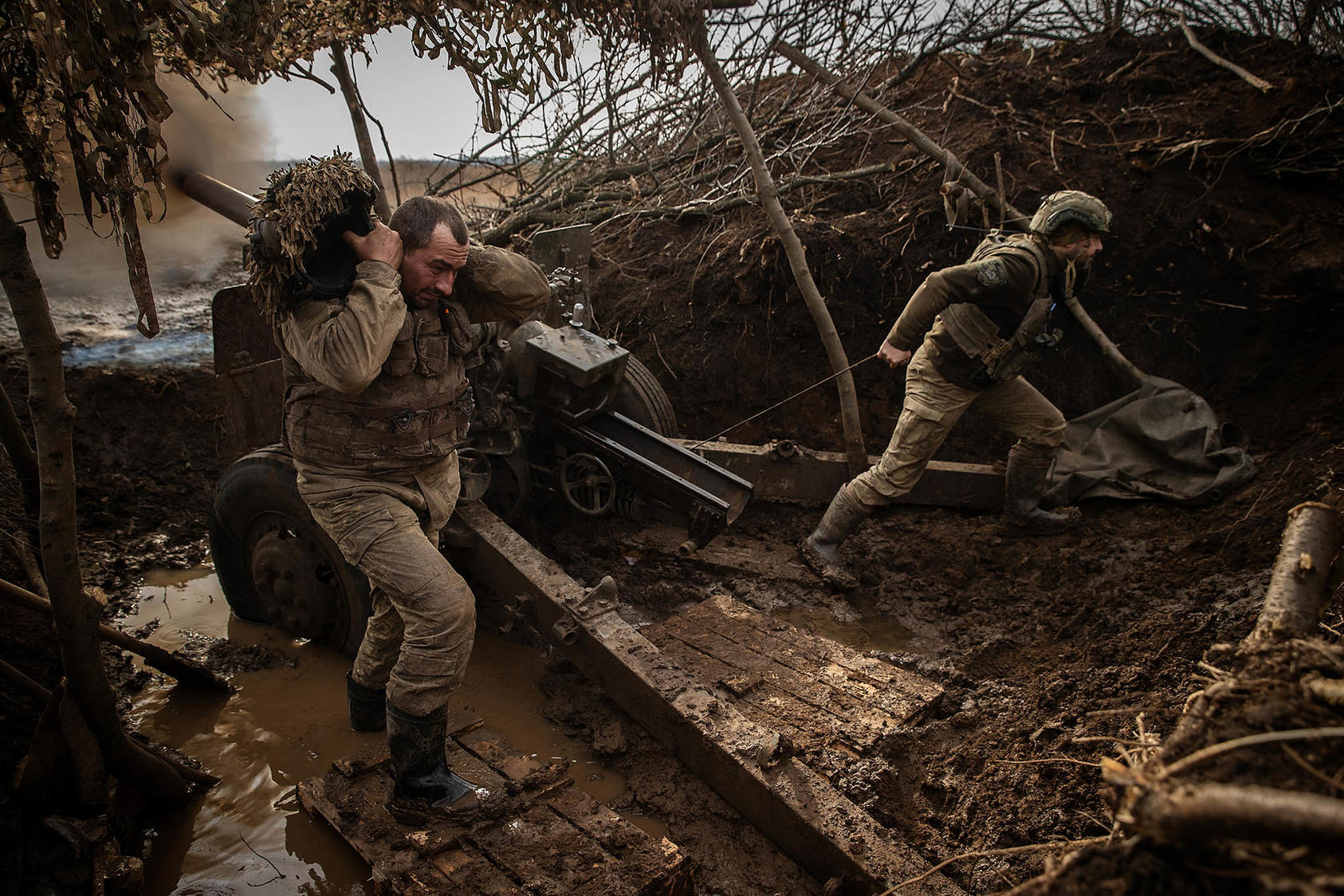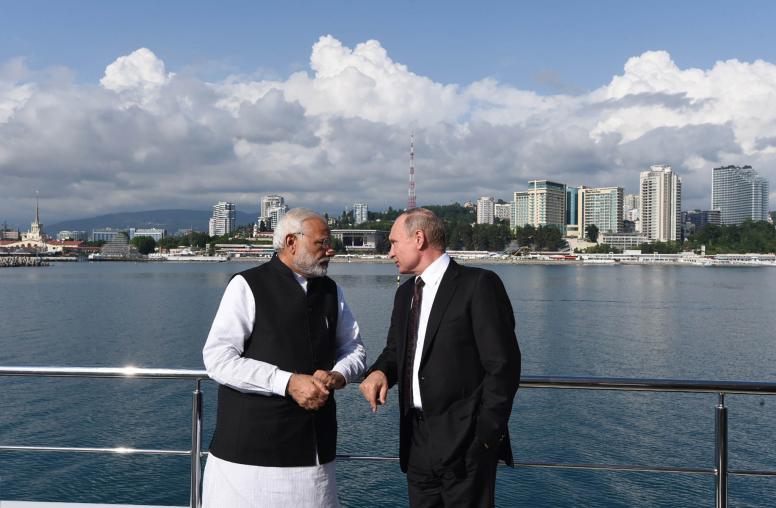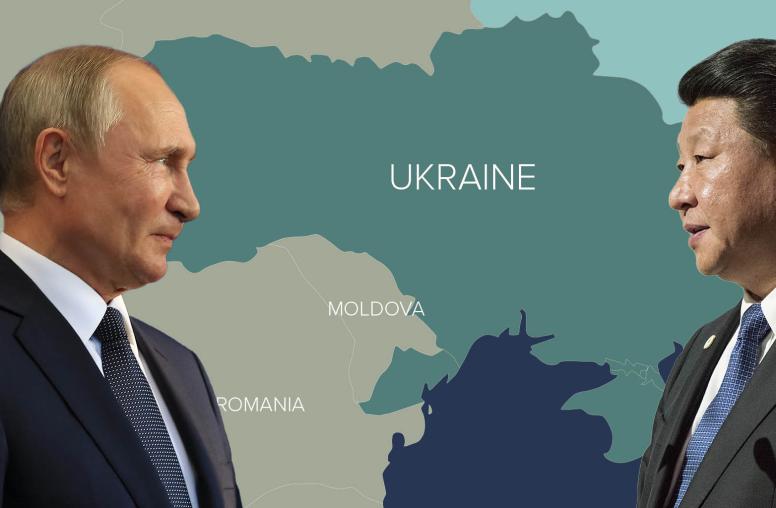In Search of a Formula for Lasting Peace in Ukraine
Investing in a security structure and institutions that will disincentivize further Russian aggression is key.
As the war in Ukraine grinds to a stalemate, it is critical to begin building the peace and security frameworks that will establish a just and lasting peace for Ukraine and deter future Russian aggression. This includes building institutions that provide security guarantees for Kyiv.

Ukraine continues to work diligently on peace. On January 15, Switzerland announced that it had offered to host a peace summit for Ukraine, centered around Ukrainian President Volodymyr Zelenskyy’s 10-point peace plan. This summit, whose date has not yet been announced, aims to follow on the four previous national security-level gatherings in Copenhagen, Jeddah, Malta and Davos. Zelenskyy has expressed his hope that “all nations of the world who respect sovereignty and territorial integrity” will attend, including members of the so-called Global South. In particular, Zelenskyy continues outreach to the intergovernmental organization, BRICS+, to rally support.
In the meantime, Ukraine and its partners are working to flesh out and implement each of the 10 goals in the peace plan. One of the most important points is already making substantial progress toward becoming reality: the formulation of a series of bilateral agreements and the building of capacities under Point 9, “Prevention of Escalation.” As the point states:
“Ukraine is not a member of any of the alliances, and the Budapest memorandum has not been able to ensure the country’s safety in practice. Therefore, when the current Russian invasion is repelled, it is essential to prevent any chance of its repetition or further escalation. This can only be achieved with proper and effective security guarantees for Ukraine.”
Nothing could be more important.
In Search of Security
After the clear failure of the Budapest Memorandum — a four-party agreement that was supposed to ensure Ukraine’s security in exchange for its forfeiture of nuclear weapons — Ukraine has sought real security arrangements from its allies and partners.
Ukraine’s preferred security guarantee is NATO membership. Zelenskyy first applied for NATO membership under an accelerated procedure in September 2022, and discussions about new deterrent structures in Ukraine and Europe began roughly around the same time.
Last July, NATO’s annual leaders’ summit in Vilnius concluded that “Ukraine’s future is in NATO.” They said NATO will support Ukraine in making the necessary reforms “on its path towards future membership,” and that allies “will be in a position to extend an invitation to Ukraine to join the Alliance when Allies agree and conditions are met.” But for now, the Alliance determined, the time is not right.
This left Ukraine’s immediate security needs up in the air. A Group of Seven (G7) statement released the next day tried to bridge the gap by laying out a road map to encourage the establishment of a series of overlapping bilateral security guarantees to ensure the immediate security of Ukraine and serve as a bridge until Ukraine eventually joins NATO and falls under NATO’s Article V framework on collective defense.
The G7 statement set the goal of working with Ukraine on“specific, bilateral, long-term security commitments and arrangements towards: a) ensuring a sustainable force capable of defending Ukraine now and deterring Russian aggression in the future, through the continued provision of” security assistance, support for developing Ukraine’s defense industrial base, training Ukrainian forces, intelligence sharing and a robust cyber defense.
The concept isn’t unique. The United Kingdom signed similar bilateral agreements with Finland and Sweden while they were waiting for their NATO accession. The United States, similarly, has a variety of security compacts with allies outside of Europe — from Israel’s qualitative edge model to Taiwan’s “provision of defense articles” — that codify assistance into law, a topic that others have written about. The question remains, however, what combination of resources and promises would serve as a sufficient deterrent to ensure that Russia would be reluctant to launch attacks against Ukraine in the future?
Former NATO Secretary General Anders Fogh Rasmussen, in consultation with Ukrainian presidential advisor Andriy Yermak, laid out his view on what would be best for Ukraine under the Kyiv Security Compact in September 2022:
“These guarantees should enable Ukraine’s self-defence both to deter an armed attack or act of aggression (deterrence by denial), and — in case an attack occurs — to protect the sovereignty, territorial integrity, and security of Ukraine (deterrence by punishment).”
Piecing Together Longer-Term Strategies
Currently, Western countries are working on providing the security guarantees requested in Zelenskyy’s 10-point peace formula. Thirty-one countries or actors have indicated their interest in signing bilateral or multilateral security pacts with Kyiv. All G7 countries, plus the Netherlands and the European Union, have formally opened talks. This includes the United States, although progress is on hold until the final passage of the supplemental assistance package currently being debated in the House of Representatives. The United Kingdom and Ukraine signed a formal treaty last month; France and Germany signed similar agreements this past weekend. All three seek to move ad hoc, crisis-driven defense assistance into a formal, multiyear format that provides standardized defense and intelligence assistance to Ukraine and speedy review of additional crisis requests. Press reports indicate Italy and Canada are close behind. The hope is that these assurances can serve as foundational documents for additional guarantees and as a bridge to future NATO membership.
The United States also has asked for Ukraine Defense Contact Group members to organize a series of “capability coalitions” to fall under or work in coordination with these agreements. These capability coalitions ask a country to take the lead in coordinating and ensuring that Ukraine has the necessary capability and resources to defend against an attack in that particular area. For example, the United States, in partnership with Denmark and the Netherlands, will lead the coalition to develop Ukraine’s Air Force, including providing training to Ukrainians on F16s. Other capability coalitions address air defense, artillery, tank, artillery and maritime security.
Conclusion
Investing in a security structure and institutions that will serve as a disincentive to further Russian aggression are key elements of Ukraine’s formula for a lasting peace. Research shows that building institutions and strengthening defensive capabilities help end wars faster and prevents them from reigniting.
Western efforts to build Ukraine’s capabilities to defend itself against any attacks in the future and sign agreements that underscore that the West will support Ukraine in the long term send a clear signal to Moscow: aggression will not be tolerated and will come with costs.
As Ukraine continues work on its 10-point peace formula, coordinating the bilateral agreements to ensure that they are overlapping and complementary, and not contradictory, is critical. Friends of Ukraine will need to continue to work with Kyiv to ensure that this critical security piece will continue to be a key part of the discussion on Ukraine’s broader peace formula at future summits. This will show the true multilateral nature of the world’s support for Ukraine and is key for a just and sustainable peace.
Dr. José Pascal da Rocha, a senior expert on dialogue at USIP, has worked in various advisory capacities in conflict settings such as Chad, Ukraine, Syria and Nicaragua.



